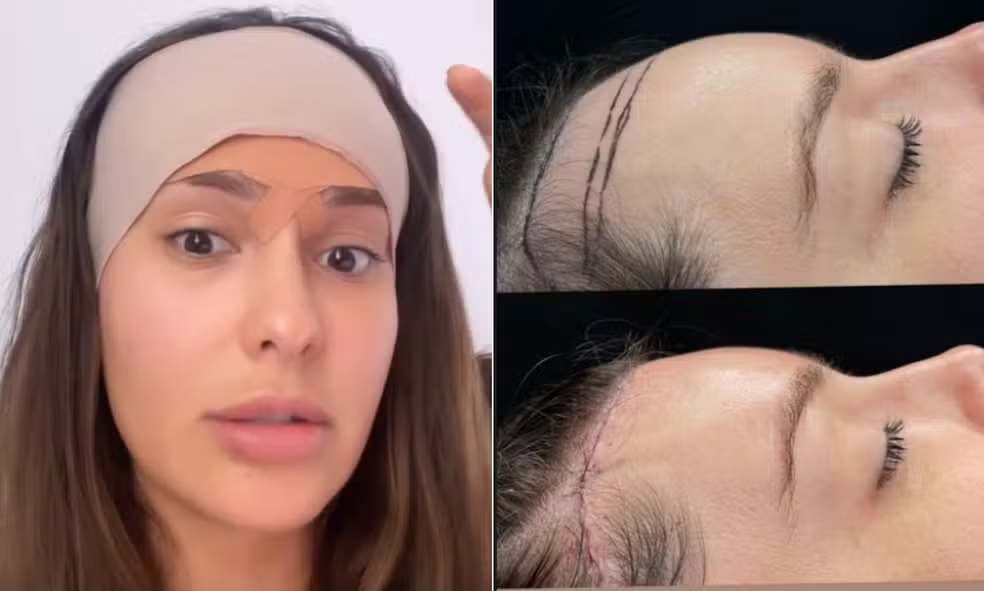Why Remove Hyaluronic Acid Before Eyelid Surgery?
Eyelid surgery, or blepharoplasty, is a highly sought-after procedure for those looking to rejuvenate the eye area, correct excess skin, or improve the overall appearance around the eyes. Although this surgery is relatively quick, it requires careful planning and attention to detail—especially for patients who have previously received hyaluronic acid injections in the area.
A common question among patients is: “Do I need to remove hyaluronic acid before eyelid surgery?” In most cases, the answer is yes. Understanding why this step is recommended is crucial for ensuring safety, surgical precision, and natural-looking results.
How Hyaluronic Acid Can Interfere With Surgery
Hyaluronic acid is a widely used dermal filler to correct wrinkles, deep lines, and volume loss, including in the delicate periocular region. However, its presence in the eyelids can make it difficult for the surgeon to clearly see the anatomical planes.
During blepharoplasty, the surgeon must precisely identify structures such as skin, muscles, and fat pads. Hyaluronic acid occupies space and can slightly distort the tissue, making it harder to perform the surgery accurately. This can compromise the final aesthetic outcome.
Additionally, in some cases, the surgeon may choose to use the patient’s own fat for small refinements during surgery. If hyaluronic acid is present, it occupies space where the fat would ideally be distributed, making it harder to achieve a balanced and harmonious result.
Hyaluronic Acid and Water Retention
Another important consideration is that hyaluronic acid has a strong ability to attract water. This can lead to prolonged swelling after surgery, which may interfere with healing and make it difficult to evaluate the final result.
In simple terms, having hyaluronic acid in the eyelid area can increase post-operative edema, affecting both comfort and the predictability of the outcome. Removing it beforehand is a preventive measure that improves both safety and surgical precision.
An Easy Analogy: The Wallpaper Effect
Think of hyaluronic acid like wallpaper on a wall that needs to be renovated. If you try to repair the wall without removing the wallpaper, you cannot see the cracks, damage, or imperfections clearly.
Similarly, hyaluronic acid “covers” the eyelid area, preventing the surgeon from fully assessing where excess skin, fat, or other corrections are needed. Removing the filler allows the surgeon to see the true anatomy and perform the surgery with accuracy.
Preoperative Assessment is Key
The decision to remove hyaluronic acid should always be made during a preoperative consultation. Not all cases require complete removal, but it is essential to determine whether the presence of the filler might compromise the surgery.
Personalized surgical planning ensures safety, minimizes risks, and avoids complications. Patients who undergo this careful assessment tend to achieve more natural and satisfying results without unexpected outcomes during or after surgery.
Benefits of Removing Hyaluronic Acid
Removing hyaluronic acid before blepharoplasty offers several advantages:
- Surgical precision: allows the surgeon to clearly see all anatomical layers.
- Natural results: filler-free tissue enables better distribution of fat and more harmonious correction of skin and contours.
- Reduced post-operative swelling: lowers the risk of prolonged edema.
- Safety and predictability: improves overall surgical safety and ensures more reliable outcomes.
Conclusion
While the presence of hyaluronic acid in the eyelids does not automatically prevent surgery, it can complicate planning, execution, and recovery. Therefore, removing the filler before blepharoplasty is generally recommended to ensure optimal results.
Scheduling a detailed consultation with a qualified plastic surgeon is essential. This allows assessment of whether filler removal is necessary, enables individualized surgical planning, and helps achieve a safe, natural, and aesthetically pleasing outcome.
Proper preoperative planning is just as important as the surgery itself. Understanding factors like the impact of hyaluronic acid can make a significant difference in the success and satisfaction of your eyelid procedure.






